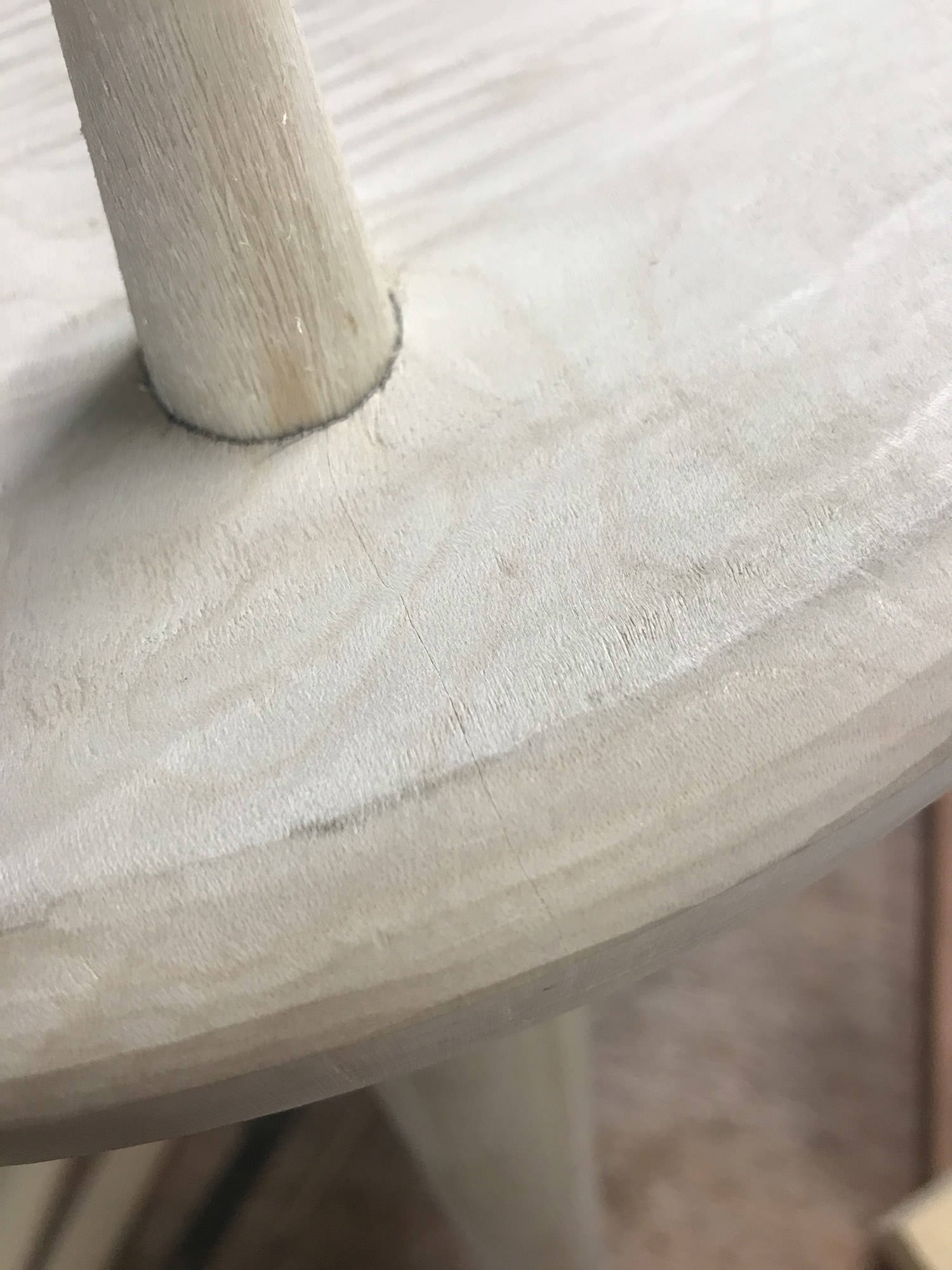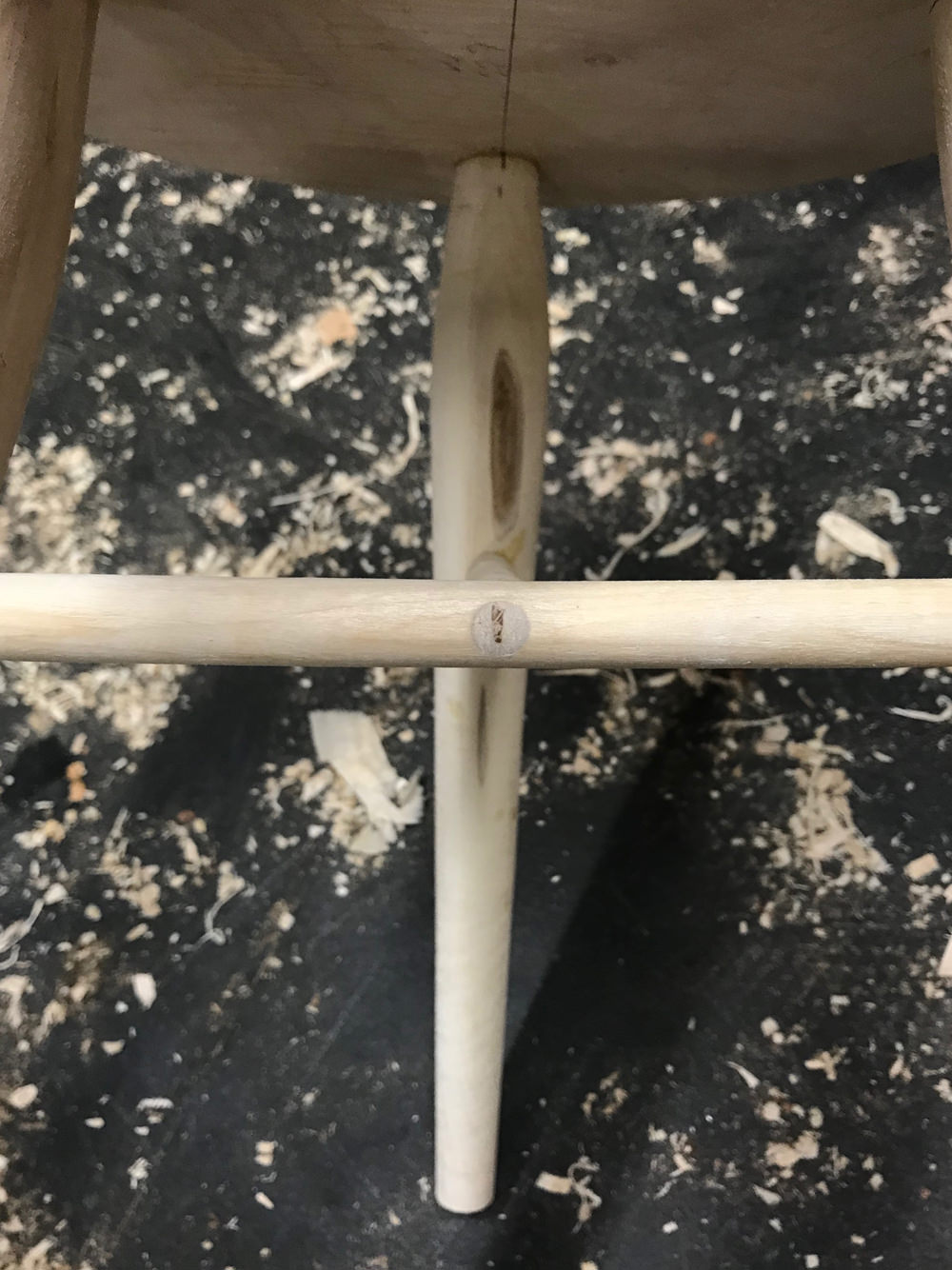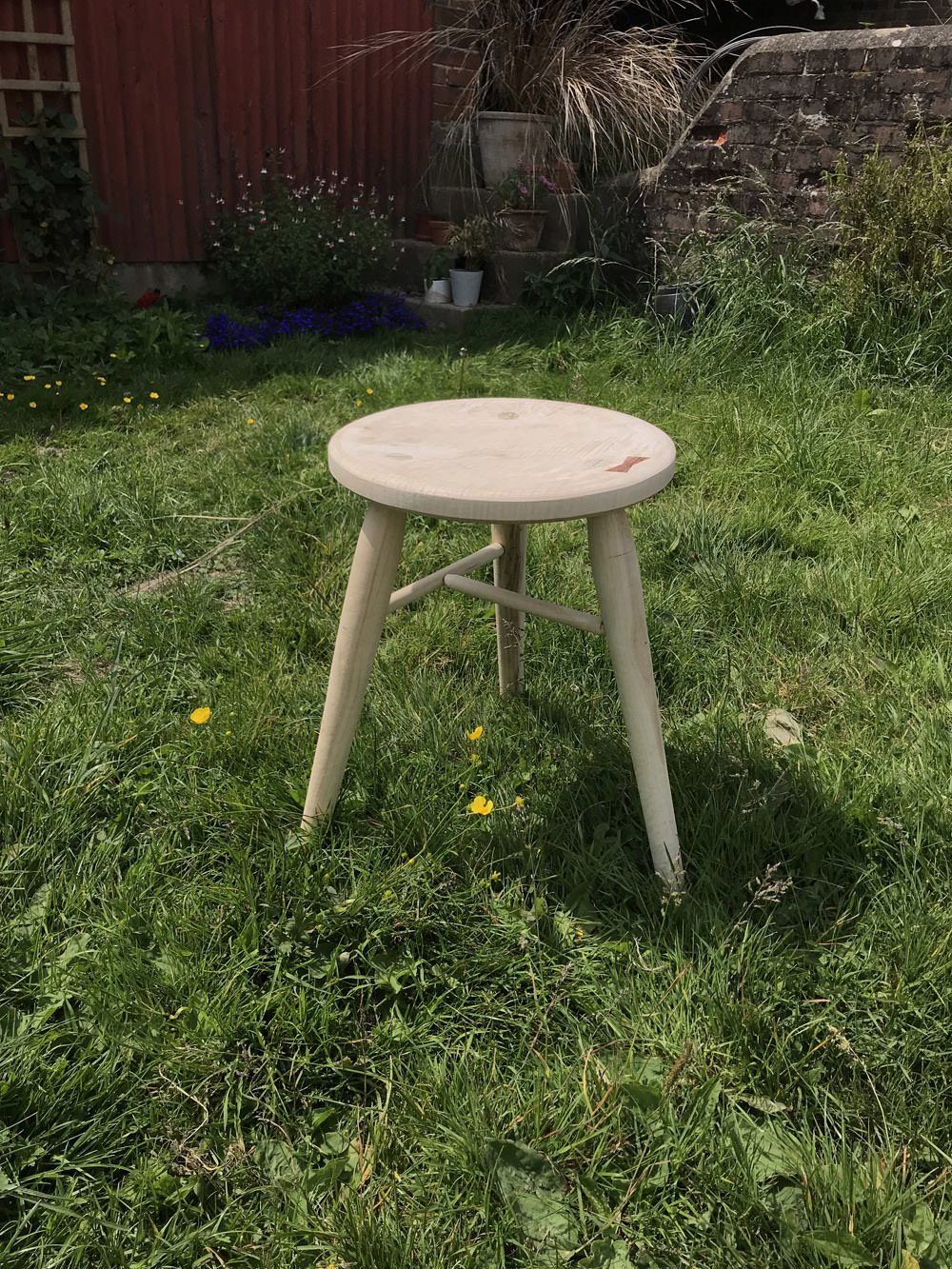El Barto
👍
Test fitting some legs into a seat yesterday I noticed a tiny hairline split appear. It doesn't go all the way through the seat but does give me some concern, especially because the leg was only lightly tapped into the socket - it makes me wonder what will happen when the tenon is eventually wedged.

The seat is rippled sycamore, not an ideal material for a seat in the first place but it also seems quite brittle. It looks nice though!
Any thoughts on how to proceed? As it stands the split is too small to get any glue into.
Live and learn (hammer)

The seat is rippled sycamore, not an ideal material for a seat in the first place but it also seems quite brittle. It looks nice though!
Any thoughts on how to proceed? As it stands the split is too small to get any glue into.
Live and learn (hammer)






































